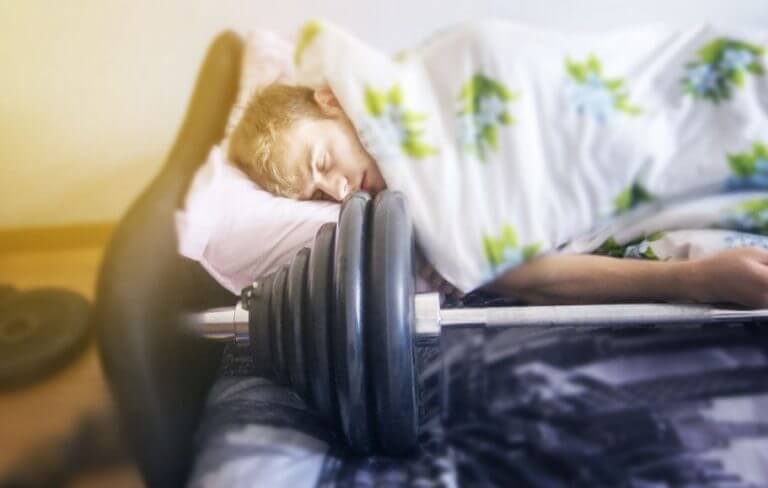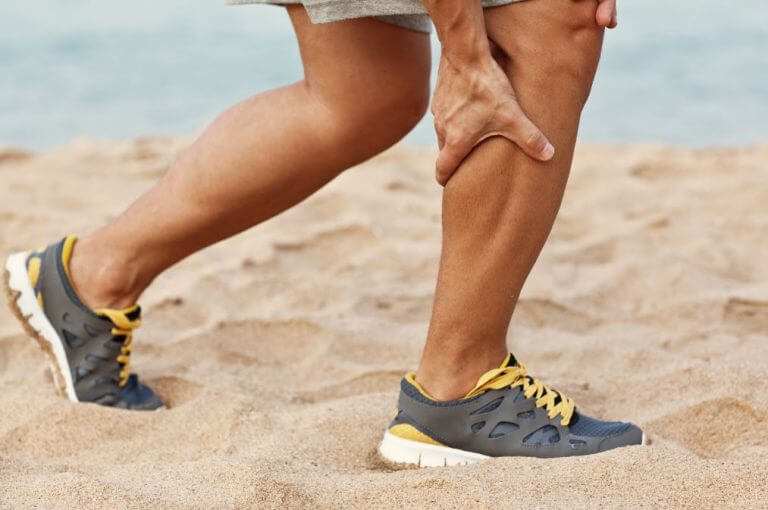The Importance of Rest Periods After Training

Whenever we want to get fit, our mind immediately thinks about a training routine. We research the exercises that adapt better to our goals and try to learn which movements are appropriate for our physical condition. But we have to remember that periods of rest are just as important as the exercises we perform.
In case you’re still uninformed about the importance of respecting rest periods, we recommend reading the following article.
During the next paragraphs, you’ll find all the information you need about the properties of rest periods. We’ll also explain the reasons why it’s so important to let your body rest if you want to achieve your desired goals.
The characteristics of rest periods
First and foremost, you must know that there’s no specific information that describes how a rest period should be. Their characteristics vary depending on different factors. Some of the factors that stand out are the sports modality you practice or the intensity of your training routine.
In any case, you can set a very clear differentiation depending on if you work out in your free time or if you do it in a professional setting:
- Amateur athletes: if you’re one of those people who do sports as a hobby, it’s important that you rest for at least two days during the week. If you do high-intensity sports, try to aim for three rest days per week.
- Professional athletes: in the case of professional athletes, they can’t afford to rest for three days per week. Their goals are much more ambitious and their bodies are better prepared, which is why rest periods are shorter. It’s hard to determine a defined rest period since it depends on the training routine set by their coach, the intensity of the sport and how close their next competition is.

The importance of rest periods
So far, we’ve stressed the importance of rest periods, but we still haven’t explained why they’re so relevant. Next up, you’ll find a list of the main reasons why every person who practices a sport regularly should set apart a few days of their week to rest:
- It favors muscle recovery
- It can help to avoid the consequences of over-training
- It’s a fundamental step for your body to assimilate the effort you exerted
Why don’t you try active rest?
For a rest period to be effective, you don’t need to lay on the couch and watch as time goes by. Taking a break from the way you’ve been exercising recently while staying active at the same time is completely possible.
To achieve this, you can use your rest days to take a relaxing bath and promote muscle recovery. If you follow up with a replenishing lotion, you’ll feel totally renewed.
Another option is to go for a walk. This is a great way to spend some time with your family while being active. Walk at a moderate pace and benefit from all the advantages of a nice session of low-intensity outdoor exercise.
This is what happens if you don’t take a rest day
We assume that by now you’re already aware of how important it is to respect rest periods. If this is not the case, take a look at some of the consequences you can experience if you exercise continuously without any rest:
- Stress muscle tears: working out constantly causes your muscles to remain tense. If you don’t allow them to relax and rest for the necessary amount of time, you can cause your muscle fibers to break and tear. This type of injury can be more or less severe, but it will generally keep you away from sports activities for a while.

- Heart problems: you’ve surely noticed how your heart rate increases when you start to work out. Depending on the intensity of the exercise, your heart rate can be higher or lower. But one thing is clear: it’s certainly higher than when you’re resting. Putting your cardiac system through extended periods of high demand can increase your blood pressure.
In conclusion, we could say that the key to this issue is a balance. If you compliment your hard work days with rest sessions, massages, and walks, you’ll definitely benefit your body and improve your training performance.
Whenever we want to get fit, our mind immediately thinks about a training routine. We research the exercises that adapt better to our goals and try to learn which movements are appropriate for our physical condition. But we have to remember that periods of rest are just as important as the exercises we perform.
In case you’re still uninformed about the importance of respecting rest periods, we recommend reading the following article.
During the next paragraphs, you’ll find all the information you need about the properties of rest periods. We’ll also explain the reasons why it’s so important to let your body rest if you want to achieve your desired goals.
The characteristics of rest periods
First and foremost, you must know that there’s no specific information that describes how a rest period should be. Their characteristics vary depending on different factors. Some of the factors that stand out are the sports modality you practice or the intensity of your training routine.
In any case, you can set a very clear differentiation depending on if you work out in your free time or if you do it in a professional setting:
- Amateur athletes: if you’re one of those people who do sports as a hobby, it’s important that you rest for at least two days during the week. If you do high-intensity sports, try to aim for three rest days per week.
- Professional athletes: in the case of professional athletes, they can’t afford to rest for three days per week. Their goals are much more ambitious and their bodies are better prepared, which is why rest periods are shorter. It’s hard to determine a defined rest period since it depends on the training routine set by their coach, the intensity of the sport and how close their next competition is.

The importance of rest periods
So far, we’ve stressed the importance of rest periods, but we still haven’t explained why they’re so relevant. Next up, you’ll find a list of the main reasons why every person who practices a sport regularly should set apart a few days of their week to rest:
- It favors muscle recovery
- It can help to avoid the consequences of over-training
- It’s a fundamental step for your body to assimilate the effort you exerted
Why don’t you try active rest?
For a rest period to be effective, you don’t need to lay on the couch and watch as time goes by. Taking a break from the way you’ve been exercising recently while staying active at the same time is completely possible.
To achieve this, you can use your rest days to take a relaxing bath and promote muscle recovery. If you follow up with a replenishing lotion, you’ll feel totally renewed.
Another option is to go for a walk. This is a great way to spend some time with your family while being active. Walk at a moderate pace and benefit from all the advantages of a nice session of low-intensity outdoor exercise.
This is what happens if you don’t take a rest day
We assume that by now you’re already aware of how important it is to respect rest periods. If this is not the case, take a look at some of the consequences you can experience if you exercise continuously without any rest:
- Stress muscle tears: working out constantly causes your muscles to remain tense. If you don’t allow them to relax and rest for the necessary amount of time, you can cause your muscle fibers to break and tear. This type of injury can be more or less severe, but it will generally keep you away from sports activities for a while.

- Heart problems: you’ve surely noticed how your heart rate increases when you start to work out. Depending on the intensity of the exercise, your heart rate can be higher or lower. But one thing is clear: it’s certainly higher than when you’re resting. Putting your cardiac system through extended periods of high demand can increase your blood pressure.
In conclusion, we could say that the key to this issue is a balance. If you compliment your hard work days with rest sessions, massages, and walks, you’ll definitely benefit your body and improve your training performance.
All cited sources were thoroughly reviewed by our team to ensure their quality, reliability, currency, and validity. The bibliography of this article was considered reliable and of academic or scientific accuracy.
- Garcia-Mas, A., Aguado, F. J., Cuartero, J., Calabria, E., Jiménez, R., & Pérez, P. (2003). Sueño, descanso y rendimiento en jóvenes deportistas de competición. Revista de Psicología Del Deporte.
- Pancorbo Sandoval, A. E. (2003). Diagnóstico y prevención de la fatiga crónica o del síndrome de sobreentrenamiento en el deporte de alto rendimiento. Una propuesta de mecanismos de recuperación biológica. Cuadernos de Psicología del Deporte, 3(1). Recuperado a partir de https://revistas.um.es/cpd/article/view/112321
- Prentice, W. E. (2000). Tecnicas de Rehabilitacion En La Medicina Deportiva (3rd ed.). Paidotribo Editorial.
- Urdampilleta, A., Armentia, I., Gómez-Zorita, S., Martínez Sanz, J. M., & Mielgo-Ayuso, J. (2015). La fatiga muscular en los deportistas: métodos físicos, nutricionales y farmacológicos para combatirla. Archivos de medicina del deporte, 32(1), 165: 36. Retrieved from http://rua.ua.es/dspace/handle/10045/49766
This text is provided for informational purposes only and does not replace consultation with a professional. If in doubt, consult your specialist.








